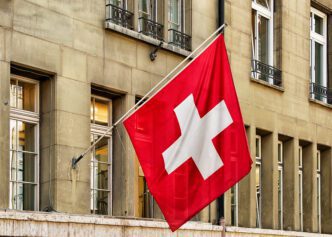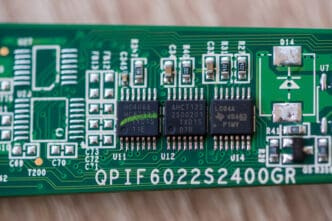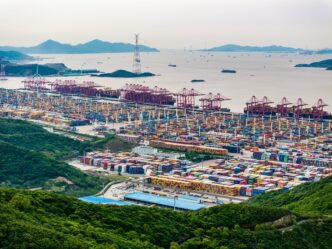MIAMI, FL – In the quiet, marble halls of the Federal Reserve, a new and unpredictable variable is forcing a fundamental reassessment of economic policy. The nation’s central bank, tasked with steering the world’s largest economy through the turbulent waters of inflation and unemployment, is now confronting the specter of Artificial Intelligence. The concern is not about algorithms trading stocks or automating factory floors—that is old news. The new, pressing anxiety is about AI’s potential to unleash a wave of job displacement so rapid and vast, particularly in white-collar professions, that it could upend the very assumptions that have guided monetary policy for decades.
This looming technological shock presents an unprecedented dilemma for the Federal Reserve and its chair. At its core, the Fed operates under a dual mandate legislated by Congress: to foster maximum employment and to maintain stable prices. For generations, these two goals have often existed in a delicate, sometimes oppositional, balance. Stimulating job growth by lowering interest rates can risk igniting inflation. Conversely, taming inflation by raising interest rates can slow the economy and cost people their jobs. The Fed’s playbook is filled with strategies for navigating this trade-off during predictable business cycles.
But AI is not a predictable cycle. It is a structural tsunami, a fundamental shift in the means of production that threatens to rewrite the rules of the labor market itself. If AI automates millions of jobs out of existence in a compressed timeframe, the central bank could be faced with a crisis that its traditional tools are ill-equipped to handle, forcing it to choose between its two mandates in a way it never has before.

The Scale of the Disruption: “Abrupt and Widespread”
The alarm is not being sounded by Luddites or science fiction authors, but by the very architects of the AI revolution. Sam Altman, CEO of OpenAI, the company behind ChatGPT, has been one of an array of prominent voices warning that the impending change will be unlike any previous technological revolution. “The thing that I think is different this time than previous technological revolutions is the potential speed,” Altman has stated, warning that job losses might not be a gradual trickle but “abrupt and widespread.”
This sentiment is echoed in stark figures from economic analysts. A widely cited report from Goldman Sachs estimated that generative AI could expose up to 300 million full-time jobs globally to automation. The focus is no longer solely on blue-collar, manual labor. Instead, the capabilities of large language models and other AI systems are aimed directly at cognitive tasks—writing, coding, analysis, design, and customer service—that form the bedrock of the modern service economy. Dario Amodei, the CEO of rival AI lab Anthropic, has expressed even more acute concern, suggesting that AI could eliminate nearly half of all entry-level, white-collar jobs within a startlingly short window of one to five years.
This speed is the crux of the problem for economic planners. The Industrial Revolution unfolded over generations, allowing society, education systems, and labor markets to slowly adapt. The digital revolution of the late 20th century, while disruptive, also took decades to fully permeate the economy. The AI revolution, its creators warn, could execute a similar transformation in a fraction of the time. Altman has used a potent analogy, describing today’s AI as a capable “intern” that will soon perform like an “experienced software engineer.” This exponential leap in capability means that economic forecasts become obsolete almost as soon as they are published, leaving institutions like the Federal Reserve in a state of profound uncertainty. The critical challenge is that reskilling and re-educating a displaced workforce—a process that already struggles to keep pace with change—may be completely overwhelmed by the velocity of AI’s advance.
Two Scenarios, One Nightmare for Monetary Policy
For the Federal Reserve, this uncertainty crystallizes into two primary, and deeply problematic, potential futures.
The first, and more immediate, concern is a deflationary bust. If millions of workers are laid off in a short period, the immediate consequence would be a massive contraction in consumer spending. With less income, households would cut back on purchases of goods and services, from cars and homes to restaurant meals and vacations. This sudden drop in aggregate demand would put intense downward pressure on prices, raising the risk of deflation—a pernicious economic state where falling prices lead to delayed spending, which in turn causes prices to fall further.
In such a scenario, the Fed’s traditional response would be swift and decisive: slash interest rates. Lowering the federal funds rate makes borrowing cheaper for both consumers and businesses, theoretically stimulating spending, investment, and, eventually, hiring. The central bank would be forced to prioritize the “maximum employment” side of its mandate, potentially cutting rates to near zero to prevent the economy from spiraling into a deep recession or depression. This would be a desperate measure to combat the downturn, even if underlying inflation from other sources had not been fully tamed. The Fed could find itself in the unenviable position of pumping monetary stimulus into an economy while still grappling with lingering price pressures from supply chain issues or geopolitical instability, a situation that could erode its credibility.
However, a second, equally plausible scenario exists: a massive productivity boom. In this version of the future, significant investment in AI supercharges economic growth. Companies that successfully integrate AI become radically more efficient, producing more goods and services with fewer human workers. This could lead to an explosion in corporate profits, technological innovation, and overall economic output.
While this sounds positive, it carries its own set of inflationary risks. If the productivity boom leads to soaring economic growth that outstrips the economy’s supply capacity, it could ignite a new wave of inflation. Furthermore, the wealth generated from this boom might be highly concentrated among company owners and a small class of highly skilled AI professionals, exacerbating income inequality. If this new wealth fuels demand for luxury goods, financial assets, and other services faster than the economy can provide them, prices will rise. In this case, the Federal Reserve would be under pressure to raise interest rates, or at least keep them high, to fulfill the “price stability” side of its mandate.
The Fed’s ultimate nightmare is that these two scenarios will not happen sequentially, but concurrently. The economy could fracture into two realities: a deflationary bust in labor-intensive service sectors experiencing mass layoffs, existing alongside an inflationary boom in the tech and capital-intensive sectors reaping the rewards of AI. How does a central bank set a single interest rate for an economy pulling itself in two opposite directions at once? This is the complex, almost paradoxical, landscape the Fed is now trying to map.
The Human Factor and the Hope for New Work
While economists model scenarios, the human cost of this transition remains a central, unquantifiable factor. The optimistic view, championed by figures like Demis Hassabis, CEO of Google DeepMind, is that AI will be a tool for augmentation, not just automation. Hassabis draws parallels to previous technological shifts, arguing that AI will create “new valuable jobs” that reward technical fluency, creativity, and the ability to collaborate with intelligent systems. He emphasizes that the future of work will demand a strong foundation in STEM subjects, which form the building blocks of the AI world.
The emerging consensus among many tech leaders is that the most valuable professionals will be those who can effectively leverage AI as a partner. It may not be “AI replacing the graphic designer,” but rather “a graphic designer using AI replacing a graphic designer who does not.” This vision requires a monumental shift toward continuous learning and adaptability.

Yet, this optimistic outlook does not erase the challenge of the transition. The creation of new jobs does not automatically provide a solution for the millions whose existing skills are rendered obsolete. The question remains whether new roles will be created quickly enough, and whether society can build the educational and vocational infrastructure to retrain workers at the necessary scale and speed.
This is why the Federal Reserve, while officially focused on aggregate data, cannot ignore the societal implications. Widespread, long-term unemployment is not just an economic statistic; it is a catalyst for social instability, which itself is a major risk to economic stability.
As Federal Reserve Chair Jerome Powell stated this week, interest rates remain unchanged for now, and the Fed continues its vigilant observation. Its public statements are cautious, acknowledging the transformative potential of AI while emphasizing that its full impact remains uncertain. The central bank continues to make interest rate decisions based on the familiar metrics of inflation and the monthly jobs reports. Projections that the Fed might enact rate cuts by the end of 2025 are still contingent on how this traditional data evolves.
But behind the scenes, the models are being rewritten. The Federal Reserve is navigating not just the end of a pandemic-era economic cycle, but the dawn of a new technological age. Its every move is now shadowed by an intelligence that is not human, and its greatest challenge will be to maintain economic stability for a workforce and a society on the brink of a transformation whose ultimate destination is unknown.








